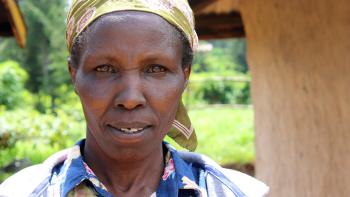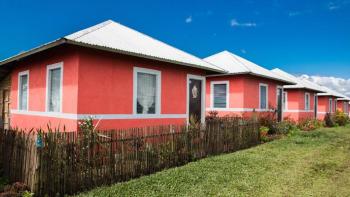
Habitat’s MicroBuild Fund expands access to loans
The success of Habitat for Humanity’s groundbreaking MicroBuild Fund, which has helped millions of low-income families around the world build or improve their homes, is the result of years of careful planning and the ability to attract like-minded and committed partners, according to a new case study out of New York University.
A case study of investment in housing
“Launching the MicroBuild Fund” follows the fund from the initial idea of creating an investment vehicle for housing aimed at low-income families to its rollout in 2012. The case study braids together the legal, business and policy issues that informed getting the fund off the ground and is the work of NYU’s Grunin Center for Law and Social Entrepreneurship and Wagner Graduate School of Public Service.
“This MicroBuild Fund case study is an invaluable and novel tool for the field to learn more about this innovative financial product and how it is providing safe, decent and durable homes to millions,” says Patrick Kelley, vice president of Habitat’s Terwilliger Center for Innovation in Shelter, which houses the fund.
A critical need for affordable housing worldwide
The case study also underscores the urgent and growing demand for safe and affordable housing, pointing out that by 2025, at least 1.6 billion people worldwide will be living in substandard housing or will be so financially stretched by housing costs that they will be forced to forgo other basic needs such as food, health care and schooling for their children. Habitat’s MicroBuild Fund seeks to address that demand by lending to financial institutions, which, in turn, provide small loans to low-income families to build safe, decent and durable homes. This type of lending supports an incremental building approach and helps families clear hurdles like lack of access to credit or land titles.
Since its launch, the fund has dispersed $132.5 million to 54 institutions in 31 countries. This has allowed those institutions to collectively grow their portfolios to $1.08 billion and help provide access to better housing for more than 2.1 million people. “The MicroBuild Fund has enabled financial institutions across the globe to provide new housing financial products and services and is having a ripple effect on the market as others adopt the model,” says Kelley.
Continuing analysis of MicroBuild’s impact
Additional case studies are planned with the goal of providing insights on how the MicroBuild Fund has had to adapt and change over the years to respond to market opportunities and challenges. Omidyar Network, a philanthropic investment firm and investor in the MicroBuild Fund, is supporting the case study work.
“Improving housing market systems that enable families to achieve affordable shelter is critical to realizing our vision of a world where everyone has a decent place to live,” says Mike Carscaddon, Habitat for Humanity International’s executive vice president of administration, chief financial officer and chair of the MicroBuild Fund board of directors.
Bumak and his family are among those who now have a decent home because of the MicroBuild Fund. For years, Bumak and his wife, Saearng, sent their young children to live with grandparents because the couple could only afford to rent a tiny room in a dangerous area of Phnom Penh, Cambodia. The couple saved whatever they could from their jobs selling ice cream and working in a garment factory, and eventually they were able to buy a plot of land and start building a house where they could all live together. The MicroBuild Fund made it possible for Bumak and Saearng to borrow small loans that helped them tile the floors, plaster the walls and install a metal roof. “We were so happy to move into this house,” Bumak says. “We were able to bring our family back together.”

